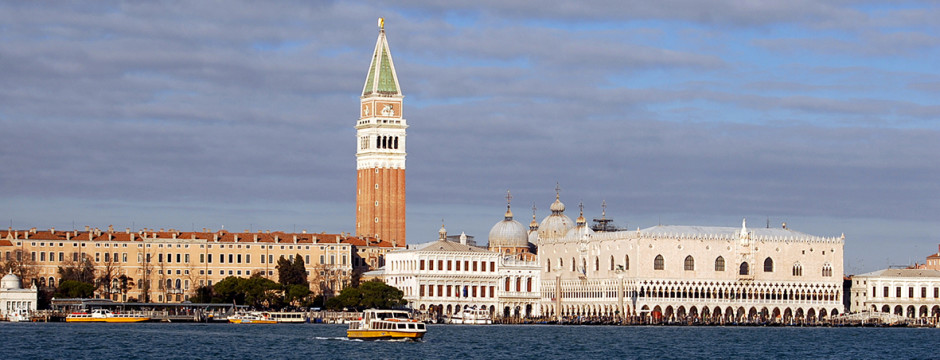Saint Mark’s church is one of the world’s greatest buildings, its fame derives from the large surface of the ceiling entirely covered by mosaics made of colored and gold glass tiles. The first temple was built as chapel to host the relics of the Gospel writer and rebuilt in the 11th century in the shape of a Byzantine church and decorated with no restraint to epitomize the wealth and power of Venice as a leading merchant city. In our tour will examine the main features of this building and the historical events the lead to its construction. A description of other buildings in St. Mark’s square will complete our visit to this iconic part of the city.
The Rialto bridge is the true navel of Venice, for centuries the only bridge to cross over Venice’s main waterway and a must for any first comer. From the top you may enjoy the greatest view over the Grand Canal and the perfect place where to ask your guide to take a picture of you with such a breathtaking background. Down the bridge we’ll enter the old merchants’ square with the porticoed church of saint James, a gathering hub now for locals who frequent the many wine bars all around. A walk through the area including the market place will follow so you can get a good sense of this part of the city.
But Venice is much more than just a few ‘must see’ places so be ready now to discover other areas of the city. Let your guide lead the walk through one or more of the six sestieri or districts and visit the sites and buildings which make it each one of these peculiar. For you to help visualize the inner partition of the city look at the map of Venice with saint Mark square at the bottom, you’ll see Cannaregio, Castello and san Marco on the right side of the Grand Canal and Santa Croce, san Polo and Dorsoduro on the left side. Depending on the meeting place we also include on section of your neighborhood.
And now be ready to see Venice from the water, the city will offer you a different perspective when seen from its dominant nature side. The most striking effect on any present and past visitors comes from the view of the imposing palaces caught as one glides on the Grand Canal, along its 2,36 miles some 200 hundred majestic buildings face the main waterway. Entering the inner canals means to see the daily life of Venice as it takes place specially in the morning hours when all deliveries are done. The water tour won’t be complete without navigating of the main water basin, once the port of Venice it is now a water plaza and the most recognizable part of the city.

